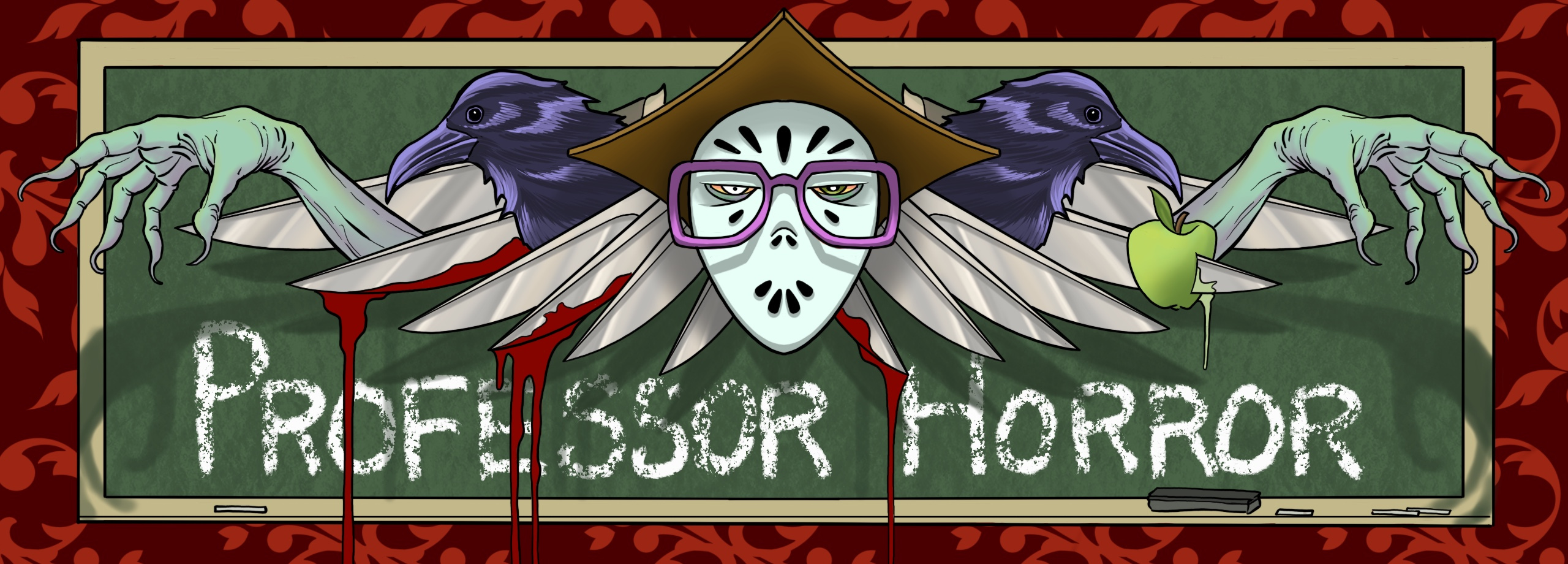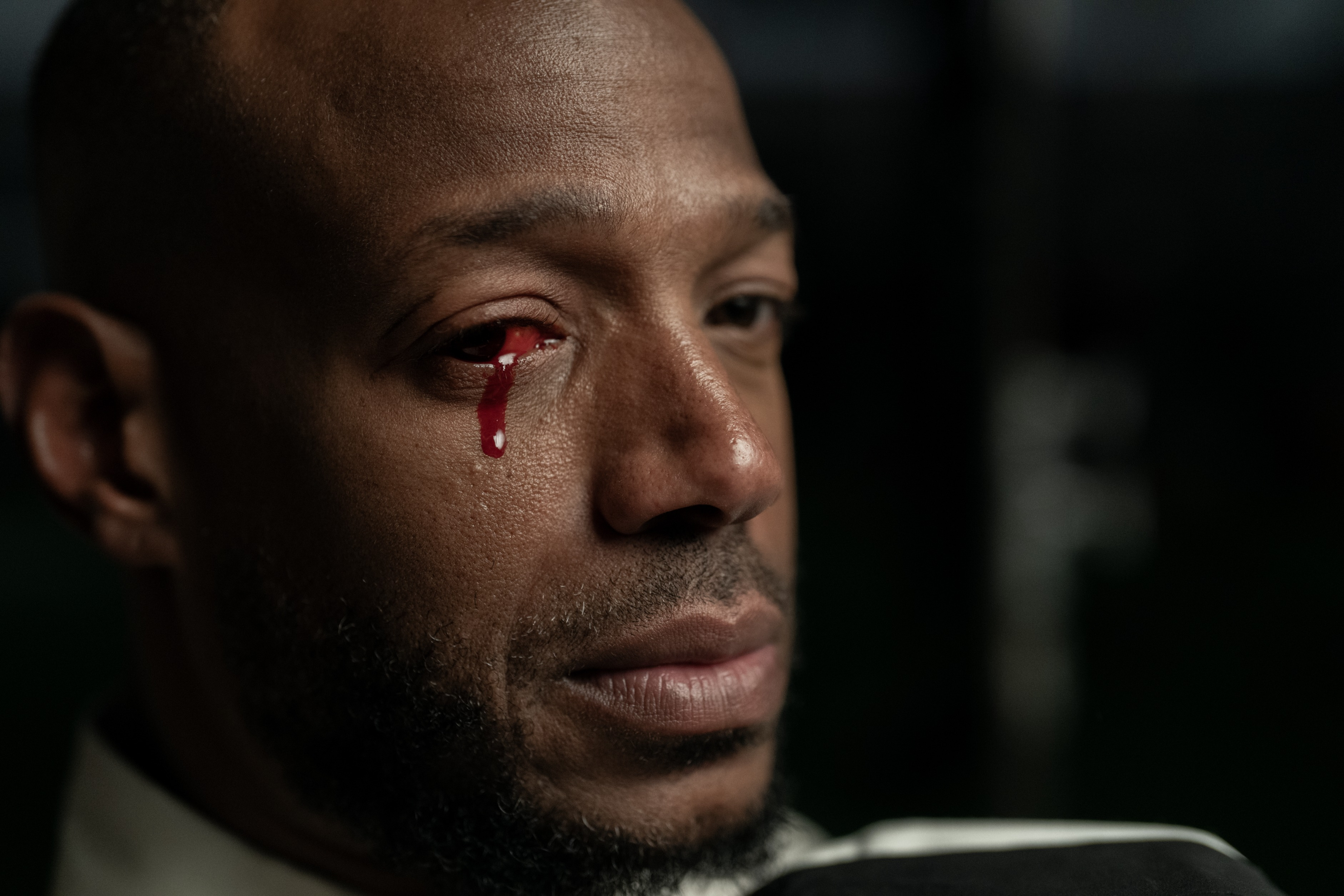
Where Horror Gets Studied, Skewered, and Celebrated.
Newest articles and reviews
HIM isn't a Movie, It's an Experience, and one of the Best Pieces of Media 2025 has to Offer
By Preston Fassel

American horror has a complicated history with post-modern structural conceits. I’m not talking about “elevated horror” (shudder) or movies that incorporate more traditionally “artsy” elements. SCREAM, IN THE MOUTH OF MADNESS, and WES CRAVEN’S NEW NIGHTMARE mainlined metanarrative into the public consciousness, having already flirted with it in the 1980s in the form of JASON LIVES and I, MADMAN. No, I mean movies that are the Mark Danielewski/David Foster Wallace/Virginia Woolf of cinema; films whose structure, visuals, and character creation are less about telling a linear A-B-C story and more about providing a cinematic experience. To be fair, we’ve always been welcoming of formative playfulness in foreign genre cinema: HAUSU premiered to broad audience acclaim in the States, while genre fans have long embraced the works Jodorowsky, Gaspar Noe, and other non-American surrealists.
When it comes to our own filmmakers, though, we prefer a more traditionalist approach. Sure, we all decided to make a collective exception for Lynch at some point, but he was our glowing exception. A quick glimpse at the rest of the canon reveals a fondness for a thoroughly modernist approach. Perhaps the found footage movie stands alone as our one major indulgence in narrative experimentation, and we cribbed that from the Italians (ave, Caesar; ave Deodato). Beyond BLAIR WITCH and its progeny, though, there’s a reason that domestic productions like LORDS OF SALEM, BEGOTTEN, and BEYOND THE BLACK RAINBOW attract nominally cult fascination within genre spaces. Sure, this year’s WEAPONS low-key dipped its toes into those waters with it’s a VISIT FROM THE GOON SQUAD/WELCOME TO THE CANDY HOUSE structure, but Tarantino and Christopher Nolan domesticated the nonlinear narrative back in the 90s.
All of this is to say that while American audiences are fine with a certain degree of experimentation in our horror, we usually prefer it come from other countries. That’s what makes Justin Tipping’s HIM, sure to be very few people’s favorite film of 2025, so fascinating—and satisfying. It’s a bold, fearless dive into full-tilt arthouse surrealism wrapped inside an experimental narrative conceit. As of this writing it’s already on its way to bombing at the box office, and I loved the shit out of it.
If you’ve seen the trailers, you know the plot: aspirant football hero Cameron Cade (Tyriq Withers) accepts an invitation from the legendary Isaiah White (Marlon Wayans) to train with him for one week at a top-secret facility to see if he has what it takes to be the next superstar. Bad things happen. That’s pretty much all you need to know going in and, in terms of raw plot, it’s about all you’ll have coming out. Audiences spotting “JORDAN PEELE” prominently displayed on posters and in other advertising can be forgiven for thinking they were going in to a standard Monkey Paw production: for as thematically deep as Peele’s films are, they’re not generally known for experimentation. That’s by design, though. Similarly to how Nia DaCosta was relegated to second billing on CANDYMAN, so too has Tipping been dropped to second-fiddle status in the promotion for his own film. That’s a bit of intentional fudging by the powers-that-be, low-key implying audiences can expect something in the vein of US or NOPE.
Nope.

White primes us for what’s in store in one of his early scenes. As he explains to Cameron, White views modern day athletes the way ancient cultures saw their tribal warriors, with training camp as something akin to a vision quest (HIM is uniquely interested in paralleling indigenous American experience with the black American experience). The same way ancient youths would accompany their elders into the wilderness in the hopes of experiencing a revelatory trance state, so too does White hope Cameron’s experiences with him will enter a transcendent state and become the next greatest of all time. So it is that we, the audience, are invited along on this journey with Cameron: at a certain point, concessions to narrative go out the window and we’re no longer watching a movie. We’re in Cameron’s head, which is to say, we’re in the heads of every young man (and especially every young black man, or—more specifically—every young mixed-race man) who sees professional sports both as their only way out of marginalization and poverty, but something approaching a secular religion. White’s oft-repeated mantra is football, then family, and lastly God. Next to Jesus Christ, Americans’ next most important spiritual icon is arguably the pigskin. Superbowls are rivaled only by the Olympics and the finales of certain popular sitcoms for the most watched broadcasts in American TV history. With the pageantry and uniforms, the mascots, the beautiful women in costume, and the audience chanting in ecstasy, it’s all very Roman Catholic, complete with sacrificial lamb: the US routinely offers marginalized young men the opportunity to live lives of extreme privilege and freedom from concern, but only if they’re willing to risk their bodies and souls for the amusement of the masses. So many NFL players have been diagnosed with brain damage that Wikipedia has an entire page dedicated to keeping track of them.
And here’s the brilliance of HIM.
Again, HIM isn’t a story—it’s an experience. More specifically, it’s the experience of being a young football star whose life and career have been cut short by traumatic brain injuries, and his shamanistic quest to achieve true superstardom by transcending the confines of his fragile earthly body. It’s a vision quest to achieve football godhood. It’s an indictment of America’s secular religion. It’s absolutely weird as shit. If Ken Russel and Spike Lee got together with David Cronenberg to do ketamine and direct a remake of ANY GIVEN SUNDAY written by Don DeLillo, it would probably look a lot like this. Viewing HIM is something akin to being inducted into a mystery religion: early scenes play out normally enough, and for about twenty minutes or so it seems like both Cameron and the audience are in for a garden-variety horror fable. There’s the flashback prologue establishing our hero and villains’ paralleled backstories. The training montage. Cameron is attacked by a mysterious assailant but then almost immediately invited to a cutting-edge training program. We know these beats. We expect them. They lull us into complacency.
Then, things begin to get a little… off. Certain scenes don’t end “right.” Characters appear and disappear with no apparent purpose. A dramatic set piece will unfold and then get entirely ignored. People in weird costumes drift in and out of frame. Symbols appear, rituals are performed, and the film degenerates into a psychedelic phantasmagoria of sounds and visuals meant to place you inside of Cameron’s head. To quote Childish Gambino, this is America, and Tipping invites us to experience it the way Cameron- and all the young men like Cameron- are encouraged to experience it. The dark irony is that Tipping will probably end up preaching to a choir: audiences who’ll both stick around and appreciate what he’s trying to do here will no doubt already be well versed in the NFL’s fraught racial and medical ethics. Meanwhile, even viewers who might be more open-minded about a sociocultural reassessment of the realities and role of pro-football will undoubtedly find the execution impenetrable.

And that’s a damn shame, because HIM is a certified work of art, a sensory experience akin to if David Lynch directed one of those “Immersive Art” programs they’re forever advertising on social media (Immersive Frieda was pretty kick ass). Buttressing the sharp visuals is a legendary performance from Marlon Wayans, who apparently watched THE SUBSTANCE and HEREDITARY and decided he, too, would like to turn in an Academy Award-worthy performance in a horror film. Sending major Dennis Hopper in BLUE VELVET vibes, Wayans sleazes through every scene like a perverted lion on the prowl: proud, assured, and confident, he visibly relishes making everyone around him squirm for no other reason than showing them he can. Most powerful is his ability to transition between jokey conviviality and frothing- at-the-mouth, murderous rage. In the hands of lesser performers, such a switch can come across as comical. Like Joe Pesci or James Gandolfini, Wayans knows just how to balance mirth and menace, so that White’s turn-on-a-dime quality comes with a real sense of threat. He’s having an absolute blast, matched perhaps only by Julia Fox (UNCUT GEMS) as White’s trophy wife and Jordan Peele’s lucky white man Tim Heidecker as Cameron’s agent. Fox visibly relishes her not-so-gentle piss-take on Gwenyth Paltrow and the cult of the secular-spiritual white woman, particularly when angrily insisting that Cameron shove a gemstone dildo up his ass for his own health. In the midst of it, Withers delivers a performance that’s amazingly contradictory in its execution. In a film where he ends up doused in blood, bug-eyed, and wielding a Spanish Conquistador’s axe as a slasher movie weapon, he’s the straight man. It takes a lot of talent to suffer a nervous breakdown and kill a bunch of people on camera and still be the most subdued person in the room, but damn if Withers doesn’t pull it off.
HIM is already proving itself impenetrable to much of middle America, but let’s not get greedy. This is an amazing year for original horror at the box office. SINNERS, WEAPONS, BRING HER BACK, and more have demonstrated audiences are willing to take risks, explore new territory, and embrace stories and creators who come from outside what can be a traditionally limited box (I’m looking at you, 80s slasher cycle). Perhaps Tipping was asking too much at this moment. No, HIM isn’t for everyone, at least not right now. Wait for it. I have no doubt that HIM will enjoy a THE THING-style renaissance a few years from now after picking up considerable word of mouth, with future audiences questioning why it wasn’t more openly embraced upon its premier. In the meantime, HIM is destination viewing for horror fans, and an opportunity for you to have been “in the know” when its day inevitably comes. You can say you were following Justin Tipping back in his rookie days.
Grubby's Hole
About Professor Horror
At Professor Horror, we don't just watch horror: we live it, study it, and celebrate it. Run by writers, critics, and scholars who've made horror both a passion and a career, our mission is to explore the genre in all its bloody brillance. From big-budget slashers to underground gems, foreign nightmares to literary terrors, we dig into what makes horror tick (and why it sticks with us). We believe horror is more than just entertainment; it's a mirror, a confession, and a survival story. And we care deeply about the people who make it, love it, and keep it alive.